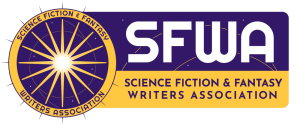By Jay O’Connell
In the blink of an eye, AI-generated art has evolved from a disturbing oddity into stunningly crafted images mimicking every art medium. But is this content good enough for commercial use by publishers and indie authors? And more importantly…is it legal?
In September of 2022, an artist received US copyright registration for a graphic novel that used AI-generated visual content which had been composited and reworked. A previous 2022 decision declared an unmodified piece of AI art public domain and uncopyrightable by the AI itself. But these decisions are unlikely to be the last word, as the art used to train these AI systems contains copyrighted works alongside public domain content, and the jury is still out on what constitutes fair use in this situation.
So, if you are risk averse, you should hold off using AI art commercially for now. If you work with commercial art professionally (or even if you don’t), I recommend creating a free account at one of the many AI art-generation platforms and generating some images to ready yourself for the seismic shifts coming. We currently await the outcome of the legal battles which will determine AI art’s legal status.
It may take years for this to work its way through the courts to a final decision.
Here’s why I think AI art will prove itself legal in the months and years ahead—particularly if you hire a designer/illustrator to work with you. Painting and drawing styles have never been copyrighted. Since graduating from an illustration program at Syracuse University in the early ’90s, I’ve seen popular styles generate copycats who are never successfully sued for aping the style of another artist. The style originator commands a premium, but when demand exceeds supply, copycats arise. That’s how markets work.
The copycats are never perfect replacements, which is an important idea in the law. AI art isn’t a perfect replacement, either. Too many people can spot the differences between AI art and a human-created painting, digital or not. (This is particularly true at full size; the tiny thumbnails look deceptively human.) Of course, individual creative works and franchise IP remain copyrighted. Your AI-generated Captain America raccoon may get you in trouble if you try to sell him on a T-shirt, regardless of how that image is generated.
In the meantime, I’m using Midjourney professionally for my indie/small publishing clients. In my experience it creates the best-looking content of the current AI services, and like most of the others, it grants me a nonexclusive copyright on the images it creates. (Assuming any AI art copyright proves legal in the long run.)
I recommend hiring a design professional to collaborate with on your AI art content. She knows which AI images are becoming overused cliches, such as Midjourney Girl, a synthetic brunette the AI delights in spitting out. Your designer/illustrator can inject color palettes that do not scream “I made my art for free on the web!” Her mastery of color theory, image editing, composition, and typography can transform raw materials, even public domain raw materials, into a copyrightable derivative work.
The AI art that recently received copyright was itself reworked and combined with type, and it seems reasonable to assume that such pieces will remain legal. (But I’m no lawyer, and nothing in this piece should be construed as legal advice.)
Still want to go it alone with Midjourney? Here are some tips:
- Buy any level subscription to Midjourney (remember to cancel when you are no longer using it!). Midjourney grants a nonexclusive license for your generated content. Do not use images you generate with a free trial for commercial purposes.
- If you are risk averse and/or your ethics demand it, do not use prompts, including living artists’ names or aggregate names that point at living artists’ works.
- Read the Midjourney documentation and spend time in one of the public Discord channels studying the images scrolling by—and the prompts that made them. Cut and paste prompt words from works that appeal to you in a notes file. You may also use the search engines popping up that index AI art images and the prompts that generated them.
- If you’re interested in a more structured approach, google “AI prompt builder.” These web applications walk you through creating the prose that makes the image, using language that helps target the training set imagery the AI uses to construct your image (camera lens type, lighting configurations, painting styles, etc.).
- AIs have trouble with context, and crafting a prompt is…well, something of an art. “A woman with a flashlight” might render as a woman sitting near a flashlight on a table. “A woman using a flashlight” or “a woman shining a flashlight” might give better results. Programmers and those familiar with SEO optimization may have a leg up writing the prompts that produce intentional images.
- Build your prompt word by word, phrase by phrase, varying the words used to work around the AI’s confusion—avoiding words with multiple meanings is often helpful. Create variations of your images at every stage. Keep looking at the user channels for inspiration and prompt ideas. Lather. Rinse. Repeat.
- Remember to eat and sleep occasionally.
- Generate your final content at maximum quality and max resolution (you may need a subscription to do this). Create multiple variations of the images you want to use. You may change your mind about what looks best as the dizzying intoxication of creation fades. And you’ll need them all if you decide to hand the work off to a pro for a final pass.
- You may want to use AI upscaling for producing images suitable for print-on-demand covers; google “free AI upscaling” to upscale your image online, or consider hiring a professional who uses a commercial upscaling tool.
 Jay O’Connell is a writer, artist, designer living in Cambridge, MA with his wife, two cats, three thousand books, and nine computers. Jay has been an illustrator, photographer, designer, software developer, housewife, entrepreneur, office temp, construction worker, landscaper, market researcher, and burger flipper.
Jay O’Connell is a writer, artist, designer living in Cambridge, MA with his wife, two cats, three thousand books, and nine computers. Jay has been an illustrator, photographer, designer, software developer, housewife, entrepreneur, office temp, construction worker, landscaper, market researcher, and burger flipper.
